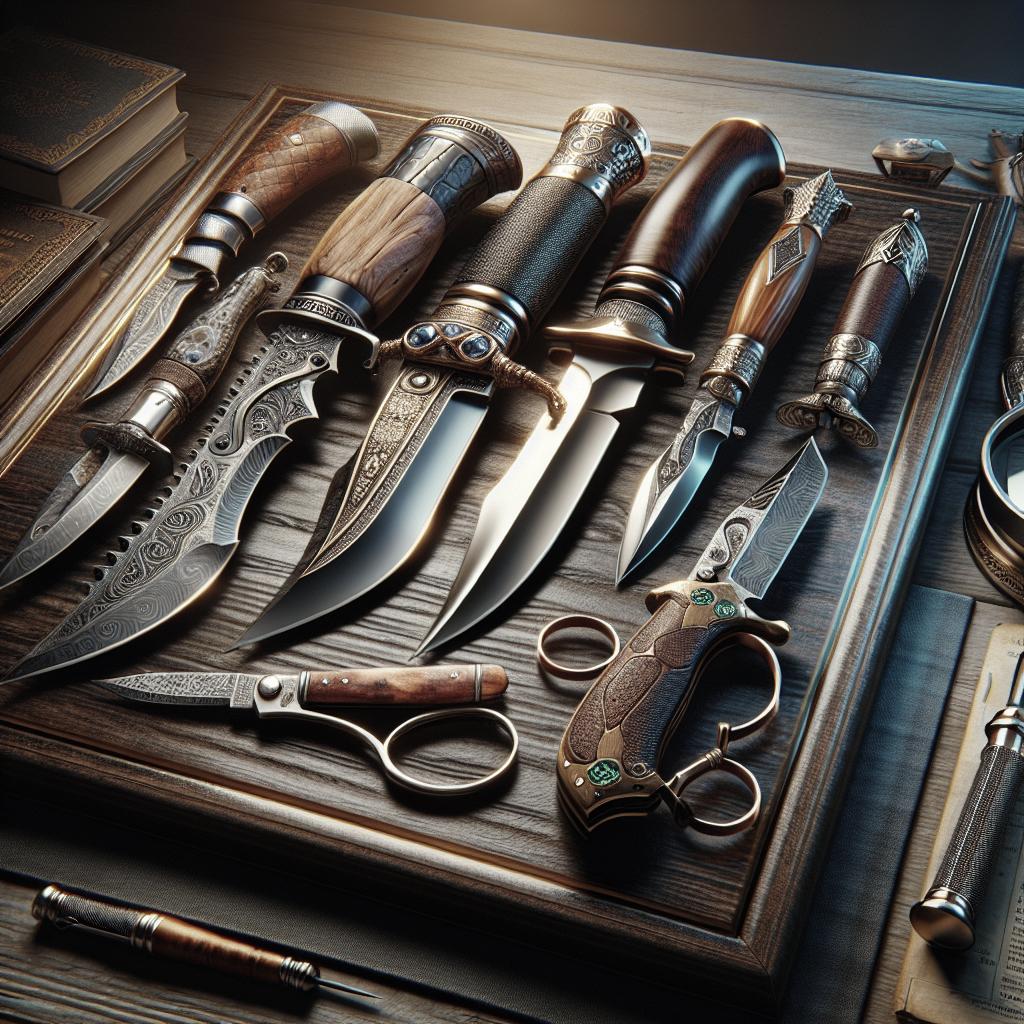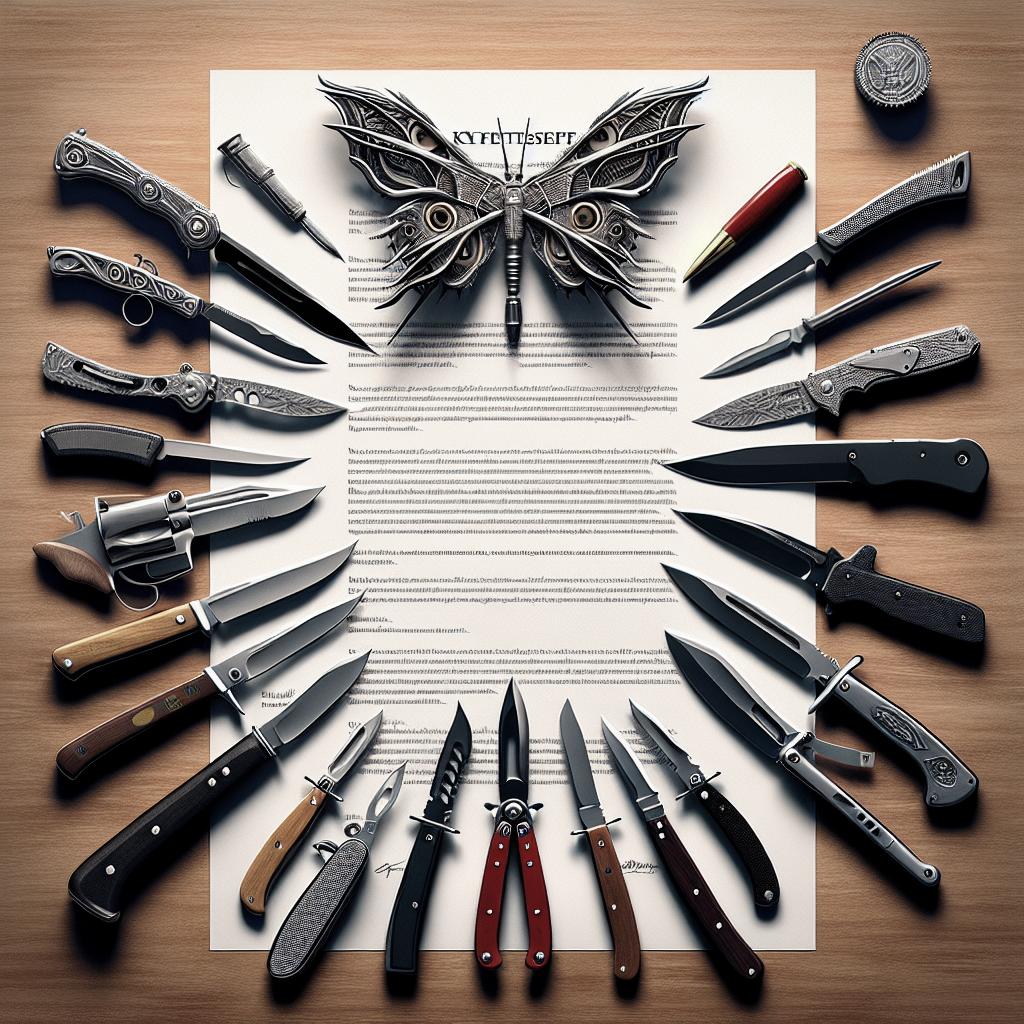Knife Collecting as a Hobby
Knife collecting offers enthusiasts a way to explore craftsmanship, history, and a wide variety of designs from around the globe. As a hobby, it involves understanding different types of knives, their uses, and the stories they tell. In this blog post, we will discuss the fundamental aspects of knife collecting, the types of knives that add value to a collection, and tips for maintaining your items. We will also explore connecting with fellow collectors and ensuring you are aware of relevant knife laws. Whether you are interested in everyday carry knives or rare collector’s pieces, this guide will provide you with the knowledge needed to dive into this fascinating hobby.
Basics of Knife Collecting
The world of knife collecting offers both seasoned and new collectors a diverse array of opportunities to delve into a hobby that is as fascinating as it is varied. At its core, collecting knives is about passion and a keen interest in the craftsmanship and history that each blade holds. Knife collecting can start with a simple appreciation for well-crafted tools and gradually evolve into a more specialized pursuit.
One of the fundamental aspects of knife collecting is the understanding of what makes a knife valuable and unique. Whether it’s the materials used in the blade and handle, the design, or its history, collectors often begin their journey by identifying what specifically appeals to them. This initial step sets the foundation for building a collection that not only has personal value but could also hold historical or monetary value over time.
Choose the Right Types of Knives for Your Collection
EDC (Everyday Carry) Knives
Everyday Carry (EDC) knives are a staple in any knife collection due to their practicality and utility. Designed for daily use, these knives are typically compact, durable, and versatile. They offer features like foldable blades and lock systems, making them safe and easy to carry around. Many collectors start with EDC knives because they provide a balance between functionality and collecting interest.
EDC knives are not just functional items but also come in a variety of designs and materials. From carbon fiber handles to stainless steel blades, the options are endless, allowing collectors to choose pieces that fit their style and needs. Oftentimes, EDC knives serve as the gateway to a broader collecting interest in more specialized types of knives.
Tactical and Military Knives
For those passionate about history or military structures, tactical knives offer a unique perspective. These knives are designed for military or survival situations, often featuring sturdy construction and multi-functional blades. They are an exciting addition to any collection, offering insights into military engineering and technological advances.
Collecting tactical knives provides an avenue to explore historical military events and unique designs tailored for specific purposes. From trench knives used in World War I to modern survival knives employed by special operations forces, these items can serve as both collectible pieces and educational tools.
Pocket Knives
The classic pocket knife is a beloved staple in the world of knife collections. Known for their compact size and foldable design, pocket knives are as convenient as they are nostalgic. These knives can come with a single blade or multiple, with some featuring additional tools such as screwdrivers and corkscrews.
Pocket knives often carry a sentimental value, with vintage or heirloom pieces offering a glimpse into the past. Collecting classic brands or models, such as Swiss Army knives or Barlow knives, can be a rewarding pursuit for those who appreciate history and tradition in everyday objects.
Kitchen Cutlery
While often overlooked as collectibles, kitchen cutlery can form a sophisticated subset of a knife collection. High-quality kitchen knives crafted by expert bladesmiths are not only functional but also works of art. Collectors who enjoy cooking or appreciate culinary arts often gravitate towards this category.
From Japanese Katana-forged chef’s knives to high-carbon steel paring knives, culinary cutlery presents a variety of styles and craftsmanship to explore. This type of collection emphasizes the balance between utility in the kitchen and the appreciation of artisanal work.
Hunting and Fishing Knives
For outdoor enthusiasts, hunting and fishing knives offer practical use and collectible value. These knives are designed for specific tasks encountered during hunting and fishing trips, such as skinning game or filleting fish. This utilitarian purpose, coupled with exquisite craftsmanship, makes them appealing to collectors.
The history and tradition of hunting knives are often passed down through generations, making them valuable heirlooms. Many collectors are also drawn to the artistry involved in crafting these blades, seeking out custom makers or vintage pieces.
Limited Edition Knives
Limited edition knives add a prestige element to any collection and represent the pinnacle of artistry and rarity. Often produced in small quantities, these knives are sought after for their unique designs, superior craftsmanship, and the exclusivity they bring.
Collectors might pursue limited edition knives from renowned makers or commemorate significant events or anniversaries. These pieces often come with certificates of authenticity, adding to their allure and value. The pursuit of such exceptional items can be thrilling, providing both satisfaction and investment potential.
Care for and Maintain Your Knife Collection
Caring for your knife collection is crucial to preserving both its beauty and functionality. Knives should be cleaned regularly to prevent corrosion and damage. Using non-abrasive cleaners and oils specifically designed for knife care can help maintain the blades.
Proper storage is also essential. Keeping knives in a dry environment, preferably in cases or on display stands away from moisture, extends their lifespan. Regular sharpening is vital to maintaining the knife’s edge, and investing in professional sharpening tools is recommended for collectors.
Build Connections with Other Collectors
Connecting with other knife collectors can significantly enhance your experience and knowledge. Building relationships with fellow enthusiasts through clubs, forums, or social media groups introduces you to a community that shares your passion, broadening your perspective on collecting.
Participating in knife shows or conventions allows collectors to network and exchange insights or trade items. These events foster a sense of community and provide opportunities to learn from experts, acquire unique pieces, and stay updated on industry trends and innovations.
Understand Knife Laws and Regulations
Awareness of knife laws and regulations is essential for collectors. Laws regarding knife ownership, carry, and sale can vary significantly by region and country. Understanding these laws ensures that your collection adheres to legal standards and helps avoid potential legal issues.
It is advisable to stay informed on both current and upcoming legislation affecting knife ownership. Joining knife rights organizations and keeping abreast of legal changes through community discussions can provide valuable information and advocacy in the interest of collectors.
Final Thoughts
Knife collecting as a hobby offers endless possibilities and a rewarding experience for those passionate about craftsmanship and history. Whether your interest lies in practical everyday knives, tactical pieces, or exquisite limited editions, knife collecting presents a dynamic world to explore. By understanding knife types, maintaining your collection, connecting with other enthusiasts, and adhering to regulations, your journey into knife collecting can be both fulfilling and legally sound.
Read More
For those interested in further exploring knife collecting, consider delving into specialized books, attending knife shows, or participating in online collecting forums. Embracing this hobby can open doors to new experiences, knowledge, and connections within a vibrant community.
| Section | Description |
|---|---|
| Basics of Knife Collecting | Introduction to the fundamentals of knife collecting, focusing on the passion for craftsmanship and history. |
| Choose the Right Types of Knives for Your Collection | Overview of various knife types suitable for collections such as EDC knives, tactical knives, pocket knives, kitchen cutlery, hunting knives, and limited editions. |
| Care for and Maintain Your Knife Collection | Guidelines on cleaning, storing, and sharpening knives to preserve their quality and functionality. |
| Build Connections with Other Collectors | Ways to engage with the knife collecting community through clubs, forums, and events. |
| Understand Knife Laws and Regulations | Insight into the importance of knowing legal requirements for knife collecting and ownership. |
| Final Thoughts | Reflections on the rewards and considerations of engaging in knife collecting as a hobby. |


